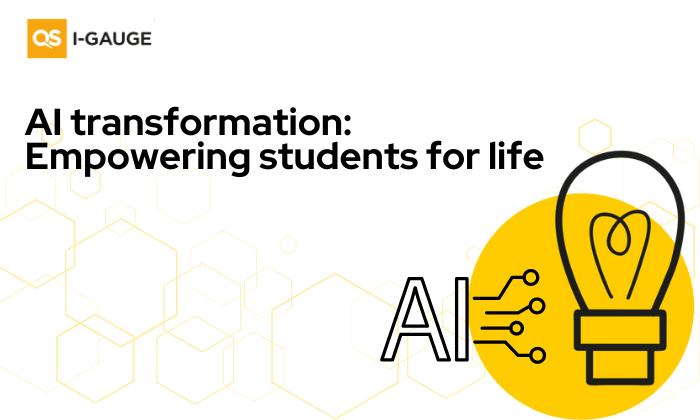
Design Thinking a Multi-Actor in Education
The educational sector has entered an epoch of transformation. Changing industry needs, rapidly evolving stakeholder demands, and new technologies are requiring institutions to reconsider their ways of teaching and delivering learning. It is also transforming the outcomes and expectations such as employability skills of students, research outcomes, entrepreneurship, and innovation capabilities. Institutions across the globe are revamping their strategy for innovative and systemic outcomes, through Design Thinking. We expect that in the coming years, long-standing traditional models of education like regimented classrooms, chalk and talk methods and teacher-centric classrooms will be supplemented by Design Thinking.
What is Design Thinking?
Design Thinking was first mentioned in the United States by computer scientist and Nobel Prize laureate Herbert A. Simon (1969) and has gained momentum over the last few decades. Design Thinking appeared as a business innovation strategy in the 1990s and attained widespread acceptance in the 2000s.
The term Design Thinking has roots in various disciplines. Design Thinking has been utilised to create value and innovate in different disciplines, including business, medicine, research, and education at all levels (Pande & Bharathi, 2020). Design Thinking, in contrast to logical thinking (because its method is iterative rather than linear), employs designers to embrace innovation. Some refer to it as "Human-Centred Design."
Design Thinking focuses on offering users with innovative solutions to problems they encounter. It does it by relying on multidisciplinary teams and co-creation methodology with users. It has a wide range of applications. Design Thinking is found to be applicable to any field, as-long-as users identify a problem.
Educational Institutions are increasingly applying the principles of Design Thinking namely; Empathize-Define-Ideate-Prototype-Test into their curriculum and organizational strategy.

The five principles of Design Thinking;
- Empathise: understand the skills of those affected by the challenge. Putting oneself in the shoes of a user, entails a design thinker experiencing a situation as a user would in order to develop an understanding of user needs.
- Define: identify and develop the challenge or problem faced by users. A good problem statement is focused on people, their needs, emotions, and desires. This is then mapped to what users said, did, thought, and felt.
- Ideate: generate ideas through divergent rational strategies. This stage involves ‘Thinking out of the box’ characterised by innovation and creativity to bring solutions to the problems defined through users’ input.
- Prototype: create early and multiple models of what might work. This is to build feasible archetypes to implement and validate ideas.
- Test: test and get feedback on prototypes. This stage is the last stage where the developed prototypes are tested for final implementation or going back to redefining the statement based on the outcomes.
Educational applications are manifold: Researchers, professors, and administrators have been using Design Thinking methodologies. The number of higher education programmes that teach Design Thinking to business students, managers, and executives is expanding, remarked Matthews and Wrigley (2017). The National Education Policy (NEP) 2020 introduces Design Thinking as an elective subject, on par with existing theory-based courses.
According to Razzouk (2012), Design Thinking can be implemented in education in three ways:
- As a problem-solving method to assist administrators in dealing with institutional issues
- To educators in developing more creative lesson plans and
- To inspire students to develop Design Thinking skills
Administration – Cross-Functional Solutions
Research conducted at Boise State University states, that Design Thinking can be used to increase the capacity of the university staff at all levels to rapidly improve the student experience. The University’s staff team from the Design Thinking IDEO class helped the division leadership team make sense of what was happening beyond their statistics.
Educators – Creative Lesson plan
Design Thinking can be applied to any challenges faced by educators be it, curriculum, spaces, processes, and systems. A 2nd-grade teacher in New York implemented Design Thinking in Space after realising that he never asked his students what would make them feel comfortable in the classroom.
Empathise: He decided to consult with his students directly to determine the best Design for their environment. Define and Prototype: Based on students' feedback, he was able to redesign the classroom to better meet students' needs and desires.
Test: He lowered the bulletin boards to make the content he'd spent hours assembling readable and created a more comfortable semi-private study space for the students. As a result, the students are more engaged and move around the room more fluidly. This is an example of using Design Thinking to re-imagine the classroom through the lens of students’ eyes to reshape their learning experience.
Students – Design Thinking Skills
Problem-solving and Human-Centred Design are two of the top five skills in need for 2025 (World Economic Forum, 2020). Design Thinking is one educational approach that promotes the development of these key skills (Luka, 2020; Scheer et al., 2012). According to the findings of a recent review study, Design Thinking is most closely linked to skills in educational contexts such as collaboration/teamwork, creativity, problem-solving, and empathy (Guaman-Quintanilla et al., 2018).
Stanford students were given a task to devise a solution to the problem of premature babies dying in India due to a lack of incubators. Students were asked to use Design Thinking techniques. They brainstormed to try to figure out what the problem was, and they came to the conclusion that it was the difficulty of keeping the baby's body temperature at acceptable levels not only while the baby was in the hospital, but also when the baby went home with the mother. The students devised the concept of a low-cost "sleeping bag" that can be mass-produced and that a mother can take home after giving birth.
Design Thinking is a flexible method for bringing disparate ideas together, discovering unique needs and common goals, leveraging various backgrounds, increasing empathy, and establishing a shared vision. While the specific practices of Design Thinking vary, its features explain why Design Thinking is presaged as a problem-solving strategy in education and beyond.
Disclaimer
The views & opinions expressed in this blog do not necessarily represent those of QS-ERA India Private Limited and/or its employees, partners, shareholders, or other stakeholders.
Authors
Jennifer George, Research Analyst, QS I-GAUGE
Girinath Reddy, Team Lead- Data Evaluation, QS I-GAUGE
Bibliography
Dr Luke Jones. How Design Can Improve Learning Outcomes in Higher Ed. Retrieved
https://Designcreativetech.utexas.edu/how-Design-can-improve-learning-outcomes-higher-ed
Holly Morris and Greg Warman (2015, January 12). Retrieved
https://er.educause.edu/articles/2015/1/using-Design-Thinking-in-higher-education
Clark G. Gilbert, Michael M. Crow & Derrick Anderson (2018). Design Thinking for Higher Education. Retrieved
https://ssir.org/articles/entry/Design_Thinking_for_higher_education
Jeff Freels & Kathleen Krysher (2020, June 5). Design Thinking for higher education innovation. Retrieved
https://uxDesign.cc/Design-Thinking-for-higher-education-innovation-b99edc79542e
H. Tsalapatas, O. Heidmann, K. Pata, Merja Bauters, C. Vaz de Carvalho (2018, July 2). Design Thinking in Higher Education for Promoting Human-centred Innovation in Business and Society. Retrieved
https://projectDesignit.eu/wp-content/uploads/2019/10/DesignIT-O1Final.pdf







Leave Your Comments